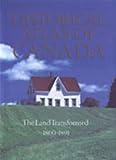Historical Atlas of Canada : Volume II: The Land Transformed, 1800-1891 / ed. by R. Louis Gentilcore.
Material type: TextPublisher: Toronto : University of Toronto Press, [1993]Copyright date: ©1993Description: 1 online resource (183 p.)Content type:
TextPublisher: Toronto : University of Toronto Press, [1993]Copyright date: ©1993Description: 1 online resource (183 p.)Content type: - 9780802034472
- 9781442675759
- 911.71 22
- G1116.S1
- online - DeGruyter
| Item type | Current library | Call number | URL | Status | Notes | Barcode | |
|---|---|---|---|---|---|---|---|
 eBook
eBook
|
Biblioteca "Angelicum" Pont. Univ. S.Tommaso d'Aquino Nuvola online | online - DeGruyter (Browse shelf(Opens below)) | Online access | Not for loan (Accesso limitato) | Accesso per gli utenti autorizzati / Access for authorized users | (dgr)9781442675759 |
restricted access online access with authorization star
http://purl.org/coar/access_right/c_16ec
The emergence in the nineteenth century of a new political and territorial entity - Canada - is dramatically portrayed in this book. Through breathtaking cartography it vividly captures the great economic and social events that made possible the successful birth of a huge new country.The Land Transformed reveals how a thinly populated and economically limited group of colonies in 1800 came together to become the Canada of the 1890s. The profound revolution was the transformation of the land: forest and grassland gave way to farmland, native populations were moved onto reservations, railways and telegraph tied together widely separated communities; urban commercial centres grew. At the end of the century Canada was recognizable as one of the world's major countries, stretching across a continent, comfortably at home in the world of railways, factories, and well-developed agriculture.The first part of the volume, 'Extending the Frontier: Settlement to Mid-Century,' describes the growth of the population and the economy in the first half of the century. Maps, graphs, charts, and paintings are used with imagination and clarity to portray the spread of settlement, based on immigration and an accelerated use of resources, the most important of which was land. By the 1850s a dominant agriculture was joined to a productive timber trade as the country's engine of growth.Part II, 'Building a Nation,' covers the country's 'coming of age.' Between the 1850s and the 1890s political union was achieved, conomic growth continued, and a recognizable Canadian society emerged. These same developments left in their wake a declining and dispersed indigenous population. A series of treaties moved Indian populations to reserves of land in a massive rearrangement of native territory that set the stage for continuing cultural conflict.The nineteenth century witnessed the culmination of four centuries of European engagement in North America. Momentous events of the time are captured in this volume, which provides a splendid visual record of the drama of nation building and the roots of the diverse nation we know today.
Mode of access: Internet via World Wide Web.
In English.
Description based on online resource; title from PDF title page (publisher's Web site, viewed 01. Nov 2023)


